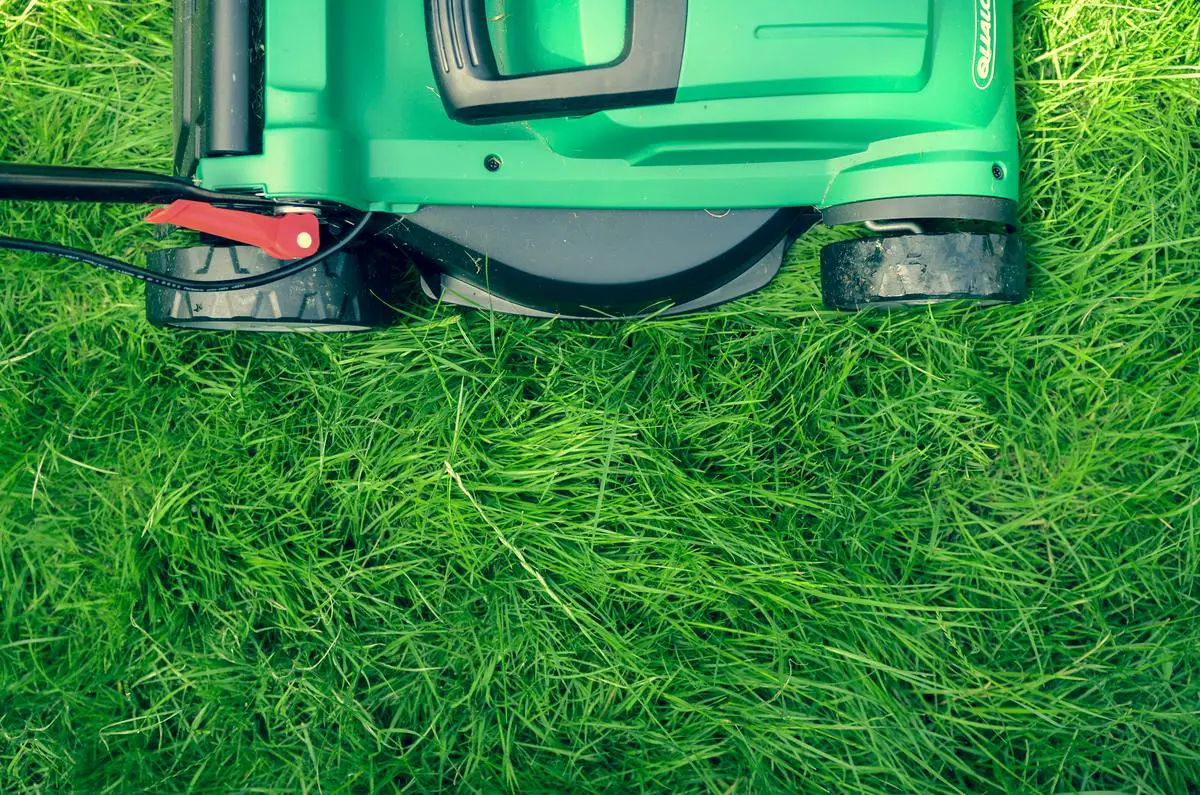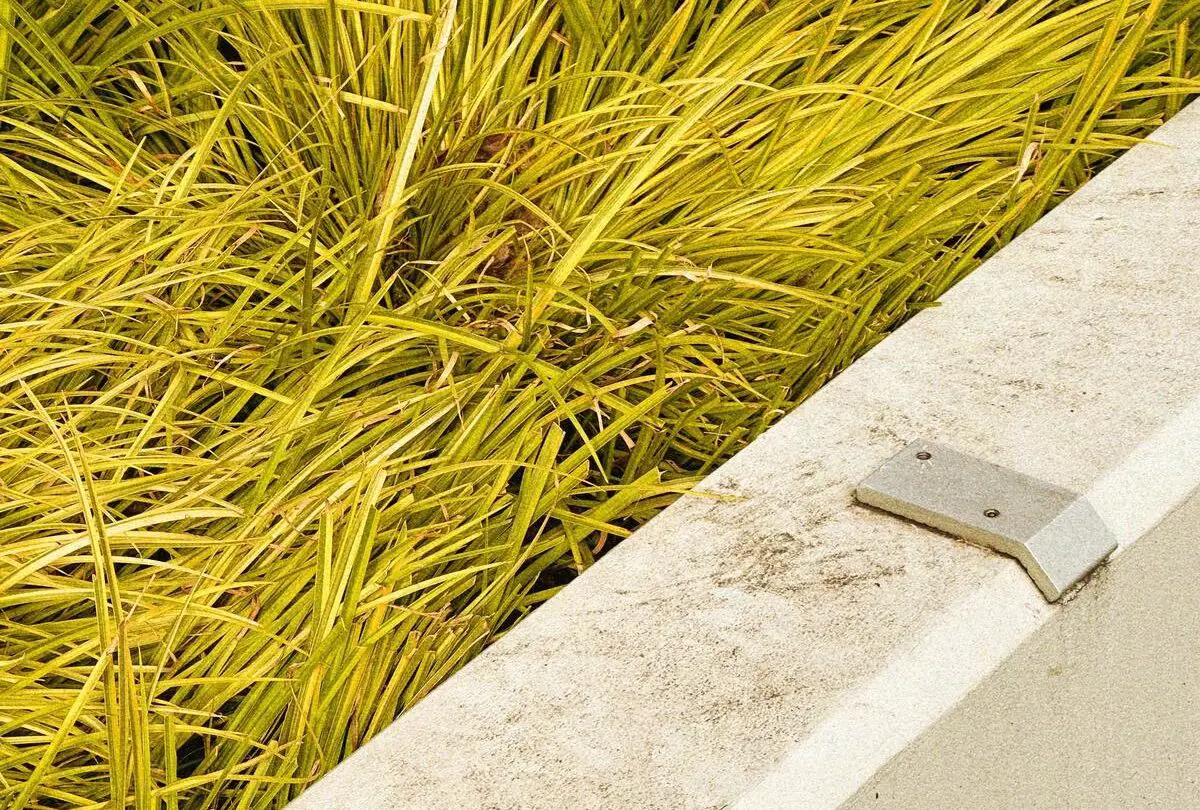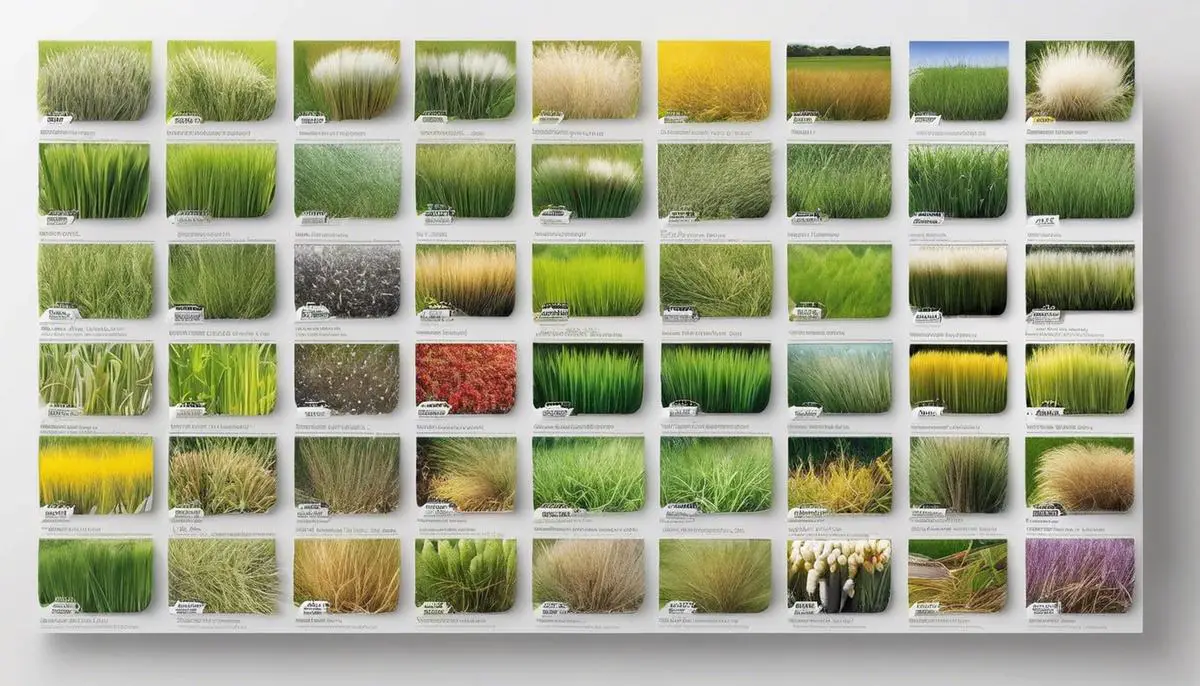With an extraordinary diversity in types, grass seeds form the backbone of lush, inspiringly green landscapes across the globe. As varieties abound, understanding the distinct nature of different grass seeds becomes essential.
This knowledge equips gardening enthusiasts with the power to choose the right seeds suited for their specific needs and conditions, directly impacting the success of their green endeavors.
Moreover, mastering the techniques of planting and maintaining these seeds, troubleshooting common challenges, and practicing the best seed storage methods can transform a novice into a seasoned turf cultivator. Equally important is being informed about the lifeline of seeds and verifying their viability before planting to ensure robust growth.
Understanding Different Types of Grass Seeds
Ahh, the delightful world of gardening! Who doesn’t love a lush green lawn? Knowing your grass seeds becomes an essential piece of a masterpiece garden puzzle. It’s fascinating how these tiny seeds have the potential to transform into a sprawling blanket of greenery.
With various types of grass seed breeds, a well-informed choice can ensure our lawn thrives across seasons and weather patterns. So, let’s dive into the world of grass seeds — revealing their unique characteristics and their best uses.
Kentucky Bluegrass
Let’s kick things off with Kentucky Bluegrass – a true winner for cooler climates. This grass seed is famous for producing a high-quality, luxurious lawn that admirably withstands cold winters. With its rich blue-green color and dense growth, it’s perfect for creating those neat, carpet-like lawns we’re all fond of.
Perennial Ryegrass
Next up, we have the hardy Perennial Ryegrass, known for its speedy germination rate. In just 5-7 days, voila! – new grass shoots. It’s perfect for those patch repair jobs and handling high foot traffic. Combining attractive dark-green color and excellent resilience, it’s not surprising that it’s a popular choice for both home lawns and professional sports fields.
Bermuda Grass
From the warm grass family, Bermuda grass takes the crown. Notorious for its aggressive growth and extensive root system, it’s ideal for sunny spots and well-draining soils. With a stunning deep green (sometimes grayish-green) color and remarkable drought tolerance, it truly thrives in the heat. Despite its toughness, remember – it needs regular mowing to maintain a neat appearance.
St. Augustine Grass
St. Augustine grass seed is another warm-weather performer. It’s the go-to choice for coastal areas given its salt tolerance. The broad, flat blades and creeping growth pattern provide a dense, lush carpet of grass. However, it demands high water requirements and doesn’t fare well under heavy foot traffic.
Zoysia Grass
Zoysia grass seed is the epitome of versatility. Prospering in a range of climatic conditions, its thick, carpet-like texture, and exceptional drought resistance make it a favorite for lawns. It’s a slow grower but stays green for a more extended period than most warm-season grasses.
Fine Fescues
Meet the Fine Fescues – those tailoring for shady, cool regions. Known for their needle-like, fine texture and easy maintenance, they’re perfect for areas with less sunlight and drier soils. While they’re relatively slow growing, they propose an ornamental appeal when left to grow tall.
Tall Fescue
Tall Fescue is an interesting pick for adaptability. A cool-season grass type with an impressive heat tolerance, it’s renowned for its rich, dark-green color, and deep-rooted sod that can withstand droughts and moderate foot traffic.
Buffalo Grass
Finally, we must salute the Buffalo grass for its true native heritage. As one of the dominating grasses of the great plains, it’s a tough, warm-season grass with exceptional heat and drought tolerance. With low fertilizer needs and preferring infrequent mowing, it sums up the “drought-tolerant, low-maintenance” tag magnificently.
Pal, the art of gardening often bemuses, doesn’t it? Whether you’re restoring your old lawn or simply sprucing up the landscape, a bit of knowledge about these grass seed cousins can make your greening experience more refined.
Grasping the nuances of these miniature wonders helps us paint a radiant green canvas that’s aligned with our unique garden aspirations. After all, happy gardening begins with understanding, right? So, armed with these insights, let’s sow the seeds of beauty and enjoy a vibrant, verdant lawn! Happy Grass Growing!
Planting and Cultivation of Grass Seeds
Seeds meet soil, water flows, sunlight shines down, and then…magic happens. Grass appears, coating the land in a velvety green carpet. Is it some inexplicable natural phenomenon that occurs sporadically? Not at all! It’s simply the result of understanding the nuts and bolts of planting and cultivating grass seeds effectively.
Timing
Firstly, timing is of the essence. The success of plant cultivation largely depends on when seeds are sown. For most grasses, the ideal time to plant is during the spring and early fall when the soil temperatures reach an optimum 50-65 degrees Fahrenheit. This coincides with seasons of intense growth, ensuring robust establishment before winter arrives.
Soil Preparation
Soil preparation cannot be stressed enough. A well-prepared soil forms the foundation for successful seed germination and grass growth. This involves tilling the soil, removing any rock or debris, and applying compost or quality topsoil to provide vital nutrients.
Tuning the soil acidity (pH) to fall between 6.0 and 7.0 is also key for optimum grass growth. A soil test kit can help determine if limestone or sulfur should be added to adjust pH levels.
Seed Selection
The seed selection process is a crucial step, already dictated by the fascinating range of grass varieties available. But it’s equally important to choose high-quality seeds. Cheap may look attractive, but in this realm, you truly get what you pay for. The higher germination rates and disease-resistant characteristics of premium seeds make them worth every penny.
Appropriate Sowing
Sowing appropriately also makes a substantial difference. Instead of scattering seeds on the surface, an evenly distributed 1/4-inch layer of soil over the seeds encourages better germination. Machines like broadcast seeders can be a great help in evenly distributing seeds over large areas. For tiny niches and tricky corners, hand seeding is a reliable ally.
Nurturing Seeds
Crucially, nurturing seeds post-sowing significantly impacts the grass’s growth rate. Proper watering practices can be a true game-changer here. Seeds need to be consistently moist but not waterlogged.
Overwatering can cause the seeds to rot or wash away, so maintaining balanced moisture is critical. Initially, watering 2-3 times per day, just enough to dampen the seeds, is typically sufficient.
Regular Mowing
Regular mowing and fertilization offer the finishing touches to a beautifully manicured lawn. Mow when the grass reaches about 3 inches in height, and ensure the blades are sharp to prevent tearing the grass. Lastly, applying a balanced lawn fertilizer after 2-3 mowings will feed the grass and encourage dense growth.
With these best practices imparted, enjoy the satisfaction of watching your seeds transform into a lush, green carpet underfoot. Remember, the real victory lies not just in the destination but in the journey, too.
Cultivating grass may not always be straightforward, but the satisfaction of successfully growing a pristine lawn is unparalleled. So, go ahead, get your hands dirty and revel in the magic of germination!

Troubleshooting Common Grass Seed Problems
Now that we’ve journeyed through varieties of grass and best practices for sowing and nurturing seeds, let’s address some roadblocks that might come up along the way.
Even with the best preparation and practices, issues can still arise when growing grass from seeds. Today, let’s unpack three of the most common problems and get into the solutions to ensure your lawn is vibrant and healthy.
Seed Dormancy
One of the common issues is seed dormancy. This could be frustrating when you’ve put in so much effort and time but the grass seeds do not sprout. Essentially, this is a survival mechanism. In nature, not all seeds sprout at once to avoid being wiped out by inclement weather or pests.
It’s easy to rectify this though: you simply break seed dormancy by scarifying it, which is a fancy term for scratching or nicking the seed coat to aid germination.
Poor Germination
Secondly, poor germination could be attributed to unfavorable weather conditions. Grass seeds are quite fickle — too hot and they dry out, too cold and they don’t germinate. So keep an eye on the forecasts: the optimal daytime temperatures for grass seed germination are between 60 and 75 degrees Fahrenheit.
Overwatering or Underwatering
Next on the list is overwatering or underwatering. A common mistake made by novice gardeners is thinking more water equals more growth. Not quite so. Overwatering grass seeds can cause them to drown or rot.
On the other hand, underwatering can cause the seeds to dry out before they have a chance to germinate. A good rule of thumb is to keep the top inch of soil moist (but not water-logged) until the new grass is about an inch tall.
Weed Competition
Another common conundrum is weed competition. It’s not always enough to just eliminate the existing weeds before sowing grass seed, as there are often weed seeds lurking beneath the soil’s surface. Applying a pre-emergent herbicide can prevent weed seeds from germinating.
Note, that you’ll need to select a herbicide intended for use with newly sowed grass seeds since common weed killers can also destroy grass seeds.
Birds and Insects
Birds feasting on your grass seeds is another common issue that might arise. To prevent this, consider using a light layer of straw to cover your seeds. It discourages birds and also retains moisture.
Insects, too, can jeopardize your efforts. Watch out for seed and root-eating pests like billbugs, wireworms, and white grubs. If these unwanted guests make an appearance, certain insecticides are designed to control these pest populations without damaging your grass.
Now, armed with this knowledge, you’re ready to tackle common grass-growing problems head-on. Remember, the key lies in observation and prompt action. Happy gardening!

Best Practices for Grass Seed Storage
Backing up a bit, let’s revisit the seed game and dig a little deeper into some easy principles that can help ensure the longevity and viability of stored grass seeds. There’s a thread of planning, strategy, and science in the tapestry of successful grass seed storage: it all starts with understanding the golden rules of seed life.
It’s common knowledge that grass seeds don’t keep forever. They’re living organisms that need care and attention even during storage. Thus, it’s pivotal to remember that the viability of grass seeds decreases over time if they’re not stored correctly. The key to prolonging their lifespan lies in balancing a trifecta of factors: temperature, humidity, and light.
One general rule of thumb when it comes to storing grass seeds is that the sum of the temperature (in Fahrenheit) and the percentage of relative humidity should not exceed 100. This balance helps prevent seed deterioration due to high temperatures or excessive moisture.
Keep Grass Seeds in a Cool, Dark Location
To keep the seeds as cold as possible, store them in a cool, dark location such as a basement, garage, or refrigerator. Just remember, low temperatures slow down biochemical reactions within seeds.
This reduces the natural degradation and viability loss process. However, remember that seeds should never be kept in a location that could potentially freeze, as this could bring harm to the seeds.
Reduce Humidity
Humidity levels also heavily affect the viability of grass seeds. High humidity equates to high moisture content within the seeds, which could spur fungi growth and seed degradation. Always aim for a dry environment to maintain seed integrity.
To further safeguard, consider sealing the seeds in an airtight container before storing them. Tightly sealed glass jars or a vacuum-sealed bag serve as excellent storage options. By limiting exposure to open air, we help curtail potential moisture absorption from the atmosphere.
Limit Light Exposure
Light exposure poses another challenge when it comes to storing grass seeds. It’s best to store them in opaque or dark-colored containers that block out light to suppress the degradation of the seed coat and maintain the seed’s dormancy.
A lesser-known fact is that before packing seeds away for storage, it’s beneficial to clean them thoroughly, remove any chaff, and ensure they’re perfectly dry. Any remnants of moisture can lead to spoilage.
Pay Attention to Expiration Dates
As a final note, always pay attention to the seed expiration date. Seeds that are stored correctly can last beyond their expiration date, but it’s a general guarantee.
Well stored, a packet of grass seeds can remain viable and ready for a successful spring planting or fall overseeding for 2-3 years. However, remember that their germination rate diminishes over time, so fresh seeds are always the best option when available.
Remember, the tenets of successful seed storage adhere to a mantra of balance: a cool, dark, dry environment cultivates the best conditions for seed longevity. The beauty of a lush, green lawn begins from a single seed; take heed, store wisely, and reap a verdant vista.
Learning More About Potential of Grass Seeds
Having walked through the comprehensive aspect of grass seeds, we realize that they aren’t just tiny, insignificant speckles. Instead, they are the genesis of a beautiful, green world that breathes life into our surroundings.
Successfully growing a healthy lawn or garden from seeds demands a nuanced understanding of the diverse grass seeds, external conditions, proper planting and maintenance techniques, and effective solutions for potential problems.
Furthermore, safe storage practices can prolong the life of these seeds and contribute to successful plantings in the future. By employing the knowledge shared in this guide, green thumbs can embark on their grass-seeding journey with newfound confidence and proficiency.

